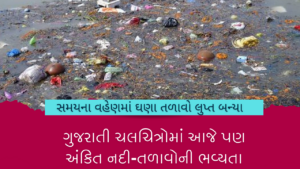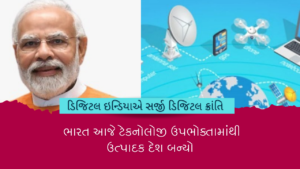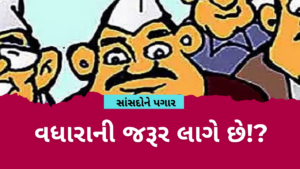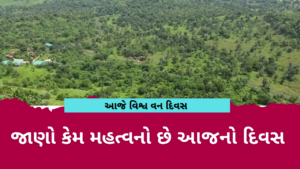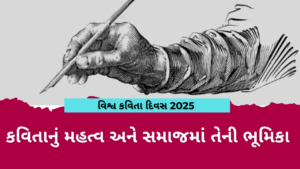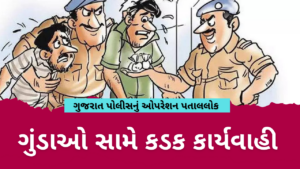– An article by Poojan Patel
In the annals of Indian history, Baroda emerges as a beacon of cultural and patriotic resonance, immortalized by the late Maharaja Saheb Pratapsinh Gaekwad’s visionary initiation of the Baroda Broadcasting Station (BBS). Maharaja Pratapsingh Rao, fueled by patriotism, inaugurated the radio station on January 10, 1947, marking a significant chapter in the evolution of India’s broadcasting landscape.
The story of Baroda’s Aakashwani began long before its inauguration. The Late Maharaja Saheb’s commitment to his people and the idea of fostering cultural richness through radio broadcasts took shape in 1935. Despite facing setbacks during World War II, the Maharaja’s resilience prevailed, and the groundwork for the broadcasting station resumed after the war’s conclusion in 1945. The late Pratapsinh Maharaj’s determination to provide broadcasting in Gujarat spurred rapid progress. By August 1946, the transmitter was installed, studio construction completed, and radio program planning was underway.
“Maharaja Pratapsinhrao had made all preparations to launch the BBS in 1939. But World War II broke out and it stalled his plans as we had to import equipment from Germany. In fact, many Germans were to help us in setting up our radio station,” said Jeetendrasinh Gaekwad, the great grandnephew of Maharaja Sayajirao Gaekwad III.
The Maharaja’s deep connection to the cultural heritage of Gujarat manifested in his insistence on broadcasting programs reflecting the state’s rich culture and traditions in the Gujarati language. A pivotal moment came when he declared, “This is my Radio Station for my people of the state, and therefore, it will start functioning with my country’s National song Vande Mataram.” The grand inauguration featured the iconic Vande Mataram, rendered by the renowned artist Master Krishnarao Fulaabrikar, symbolizing the intersection of culture, patriotism, and technological progress.
“After World War II ended, Maharaja Pratapsinhrao took up the radio station project again and completed the work by 1946. The building was in Salatwada and the broadcasting station was in Samlaya. The king had sent Sardar Krushnarao Kathiwad Dewanji to Germany for training before setting up the station,” said Gaekwad
Under the Late Maharaja Saheb’s patronage, Baroda’s Aakashwani emerged as a pioneer in broadcasting, offering a spectrum of programs that included rural broadcasting, educational initiatives, children’s dramas, plays, and musical programs reflecting Gujarat’s rich cultural tapestry. The Late Pratapsinh Maharaj’s visionary spirit also led to the organization of a grand Music Festival featuring Hindustani Classical, Karnatak, and Western Music Programmes. This festival showcased the brilliance of renowned musicians, including the world-famous Sir Adrian Boult.
“The idea was to maintain communication between the king and his subjects, broadcast educational, literary and agricultural programmes, and provide entertainment. There was great emphasis on connecting all the main towns in Baroda state with the rural areas. The medium of communication was Gujarati,” Gaekwad added.
The Maharaja Saheb’s commitment extended beyond entertainment. During the mourning period for Mahatma Gandhi, special choruses of ‘Raghupati Raghav Rajaram’ were arranged, led by musical luminaries like Ustad Faiyaz Khan, Pandit Omkarnathji, and Pandit D.V. Paluskar, exemplifying the radio station’s societal engagement.
The legacy of Baroda Akashwani continued to grow, shaping the cultural landscape of Gujarat. The Late Pratapsinh Maharaja Saheb’s contributions were not limited to entertainment; he was a visionary leader dreaming of progressive development for his people. His multiple efforts in art, sports, hygiene, education, agriculture, music, and drama garnered admiration and awards in his state.
The opening ceremony on January 10, 1947, marked a historic moment for Baroda, becoming the first Aakashwani center in Gujarat. The subsequent years witnessed the station’s expansion, with new centers established across the state in Ahmedabad, Rajkot, Bhuj, Aahwa, Himmatnagar, Surat, Godhra, and beyond.
However, progress brought change. On December 16, 1948, Aakashwani Baroda merged with All India Radio (AIR), signifying a new chapter in its journey. The city, known for its rich cultural heritage, continued to flourish with faculties of drama, dance, instruments, sculpture, painting, etc., under M.S. University. Top-level artists actively participated, contributing to the success of the Akashwani programs.
Baroda Aakashwani’s evolution also reflected the city’s cultural diversity. In May 1980, the announcement of Ahmedabad-Baroda Akashwani presenting Marathi Programs brought joy to the Marathi-speaking community, solidifying Baroda’s reputation as “Maharashtra outside of Maharashtra.” This move provided a platform for artists, writers, poets, and pandits to showcase their skills, bringing joy and knowledge to the people.
The story of Baroda Akashwani is not just a historical account but a testament to the vision, dedication, and cultural richness embedded in the very soul of Baroda’s history. The legacy initiated by Maharaja Saheb Pratapsinh continues to resonate, ensuring that the echoes of Baroda’s Akashwani journey reverberate through the corridors of time.


